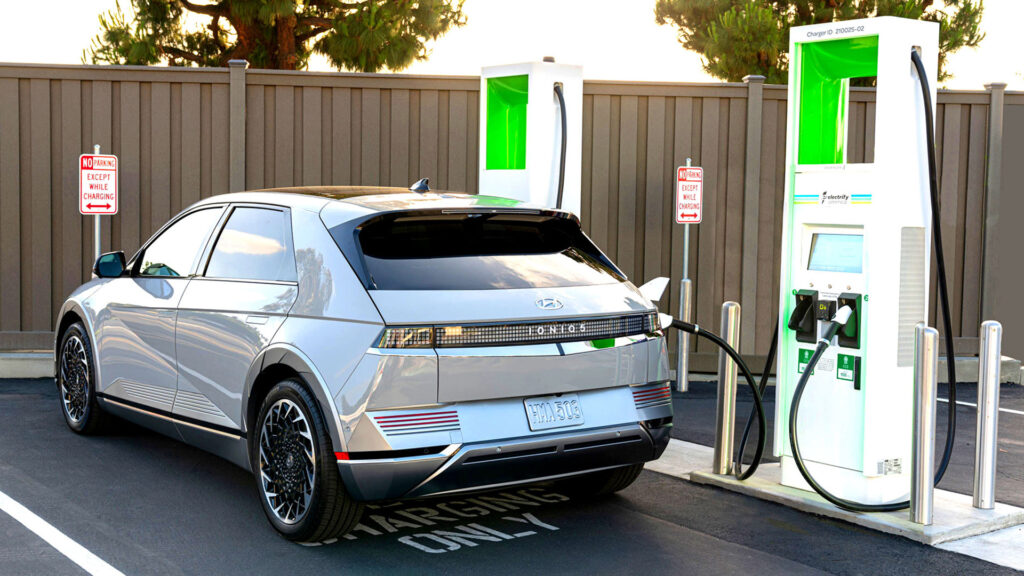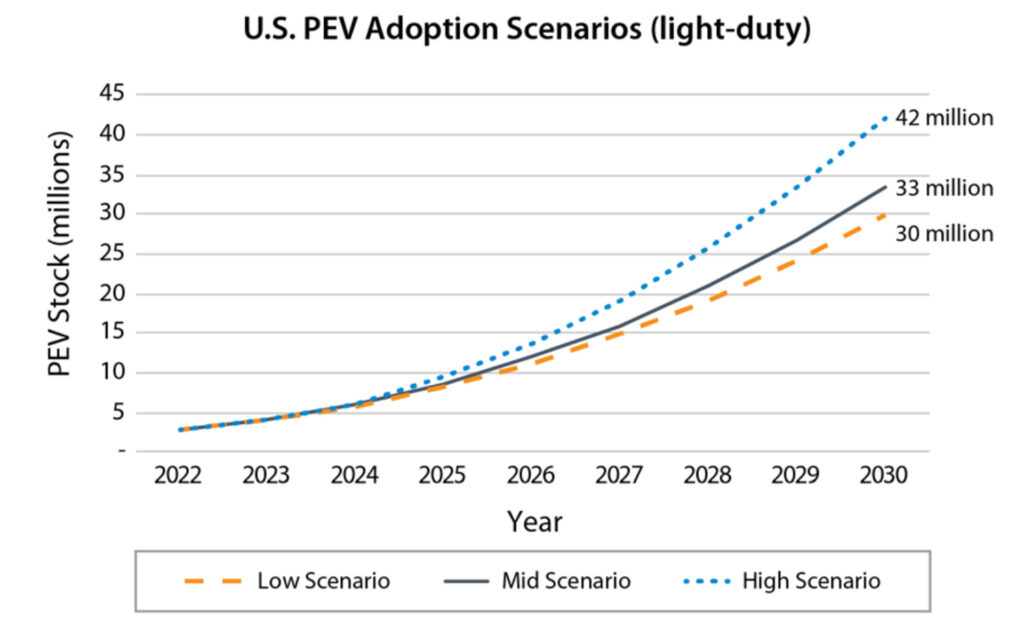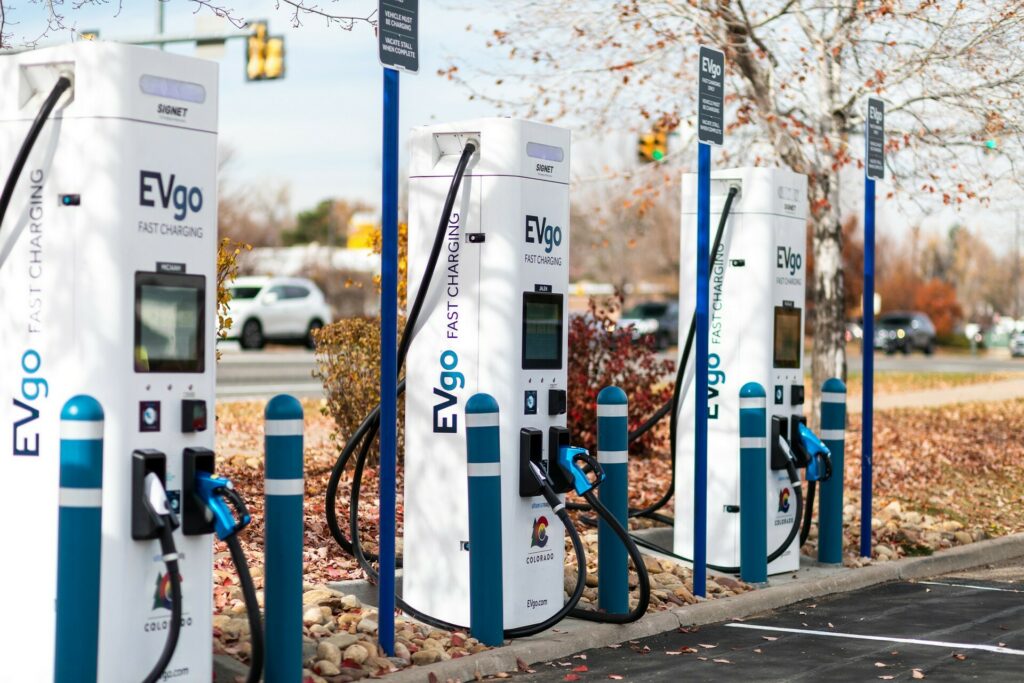Plug-in electric vehicles could make up for 61% of new light-duty vehicle sales in the U.S. by 2030
1 hour ago
 –>
–> 
–>
A new study out of the U.S. says that the nation will need as many as 28 million public and private charging ports in the event of there being 33 million plug-in electric vehicles (PEVs) on local roads by 2030.
The study conducted by the National Renewable Energy Laboratory and sponsored by the U.S. Energy Department has found that 26.8 million Level 1 and Level 2 charging ports located at single-family homes, multifamily properties, and workplaces will be required to meet demand. In addition, the U.S. will need 182,000 publicly accessible fast chargers along highway corridors and in local communities as well as 1 million Level 2 charging ports open to the public near homes and workplaces.
Introducing this many charging ports will obviously require significant investments. In fact, the study asserts that cumulative investments for privately accessible Level 1 and Level 2 charging ports could total between $22-$72 billion, some $27-$44 billion will be needed for publicly accessible fast charging ports, and between $5-11 billion is needed for publicly accessible Level 2 charging ports. The study does not include costs for grid upgrades and distributed energy resources.

An estimated $23.7 billion of capital has been announced for publicly accessible light-duty charging infrastructure in the U.S. through the end of the decade as of March 2023, consisting of funding from private firms, federal, state, and local governments, as well as electric utilities.
Auto News notes that the Biden administration has already set a goal of building a national network of 500,000 public chargers by 2030 and that as it stands, there are currently 140,755 charging ports accessible to the public across the country.
Read: U.S. Must Quadruple Number of EV Charging Stations By 2025, Report Claims
advertisement scroll to continue
The study’s sales estimates of PEVs are based on analyst projections that they could account for 48%-61% of the U.S. light-duty market by 2030. New PEVs sales had reached 7-10% of the U.S. light-duty market as of early 2023.
“U.S. climate goals for economywide net-zero greenhouse gas emissions by 2050 will require rapid decarbonization of the light-duty vehicle1 fleet, and plug-in electric vehicles (PEVs) are poised to become the preferred technology for achieving this end,” the study says. “This transition is unprecedented in the history of the automotive industry and will require support across multiple domains, including adequate supply chains, favorable public policy, broad consumer education, proactive grid integration, and (germane to this report) a national charging network.”

 –>
–> 
